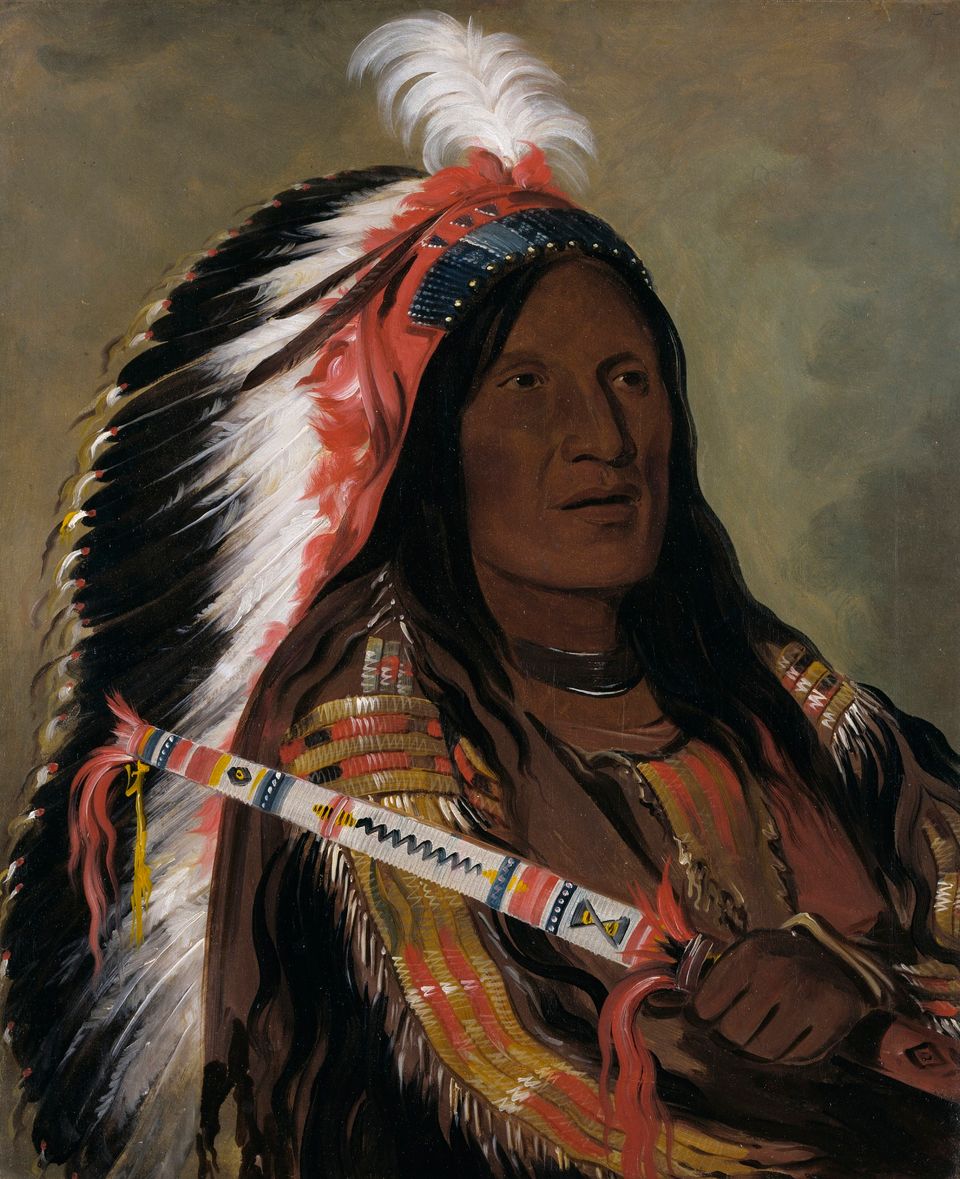
Since the NCAA's August decision to prohibit teams using Native American monikers or mascots from playing in or hosting official tournaments, the furor that exploded in the nation's college campuses has migrated to national headlines. Now, I don't instinctively turn to nineteenth-century naturalist painting when I'm weighing this kind of controversy. But I've been browsing the museum's George Catlin resources recently and found that some of the scholarship applies to today's debate.
A little background: In the 1830s George Catlin, a painter, traveled across the Great Plains in order to document the "manners, customs, and conditions" of the Native American Plains tribes. Catlin roughly followed the Missouri River, journeying nearly 2,000 miles, and in doing so produced his Indian Gallery, a body of work that catalogued individuals and activities of fifty different tribes.
A few years ago SAAM produced a virtual Catlin exhibition, Campfire Stories as part of the museum's Web-based educational resources on the artist. As you'll see, the exhibit is divided between four thematic areas of focus; each of these "galleries" also features audiovisual testimonials by various tribal leaders and scholars discussing aspects of Catlin's work. For example, under the Western Landscapes section, art historian Richard Murray explains that Catlin processed the alien Plains territory—and made it familiar to his viewers back East—by painting in two modes: the beautiful ("rounded, spacious, and rationally organized") and the sublime (emotionally charged scenes, particularly natural phenomena; for Catlin, the prairie fire). Catlin's painting features the necessarily swift, sketch-like brushstroke of a naturalist, the scientific nature of which can mask Catlin's deeper artistic concerns and strategies.
Under the Ancestral Lands heading, Anthropologist Peter Nabokov describes a fundamental difficulty in discussing Native Americans as a culture—the multiplicity of tribes and cultures to which we refer when we say Native Americans. His comment illustrates one of the most visible disagreements over the use of Native American monikers in college sports, the rift between the Seminole Tribe of Oklahoma and the Seminole Tribe of Florida over the Florida State Seminoles (and their famous mascot, Chief Osceola). It's crucial to consider not only the natural distinctions between tribes but also the artificial faults created by U.S. policies that divided tribes. Nabokov says, of course, that useful generalizations can be made about Native American culture; a universal understanding of shared land distinct from the European-American concept of property, for example.
Catlin's many portraits portray tribes as visually distinct from one another as from any other culture, which I see as a subtle indication that is borne out by the current controversy. Identity, in particular, sensitivity about identity, does not appear to be a universally shared concept in Native American culture. It's strange, then, to talk about the issue as if it involved two discrete groups that can craft policies (NCAA and Native Americans). At best, the NCAA has designed a policy that reflects what it perceives to be the majority opinion among dozens of tribes. Whether or not the policy is a good one, framing the discussion in these terms would clarify whom the NCAA is addressing.
Let me say that I'm really not the guy to turn to on the controversy—I think it's helpful and probably necessary to know the opinions of the tribes from which the eighteen affected schools borrow, but I can't say I've done that research. (And as a Longhorn, I don't have any firsthand experience with the issue.) Touring Catlin's Indian Gallery is a good start for getting a sense of the scope of the differences between the Plains tribes, and there's a place up the road that ought to have a lot more information in general.


















